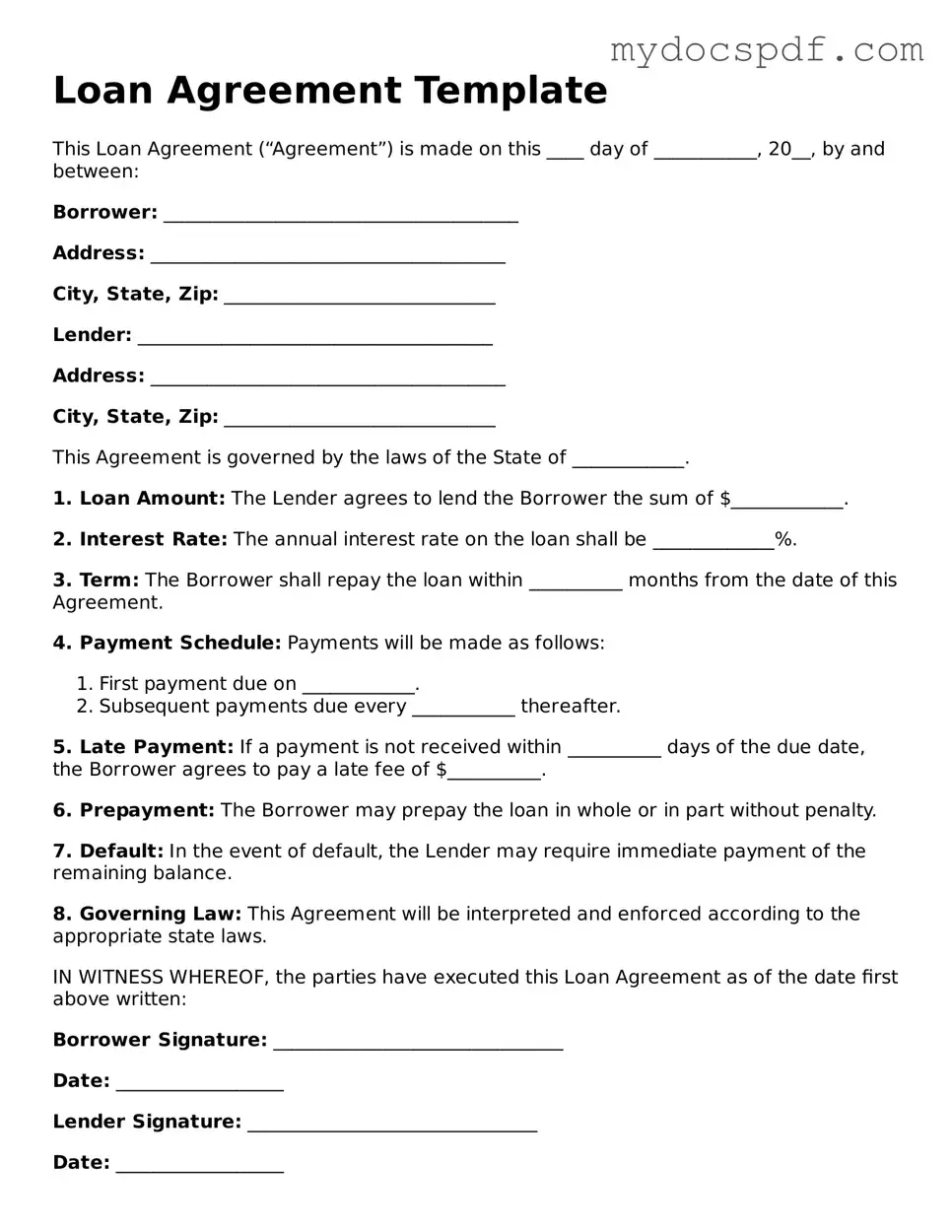Loan Agreement Template
This Loan Agreement (“Agreement”) is made on this ____ day of ___________, 20__, by and between:
Borrower: ______________________________________
Address: ______________________________________
City, State, Zip: _____________________________
Lender: ______________________________________
Address: ______________________________________
City, State, Zip: _____________________________
This Agreement is governed by the laws of the State of ____________.
1. Loan Amount: The Lender agrees to lend the Borrower the sum of $____________.
2. Interest Rate: The annual interest rate on the loan shall be _____________%.
3. Term: The Borrower shall repay the loan within __________ months from the date of this Agreement.
4. Payment Schedule: Payments will be made as follows:
- First payment due on ____________.
- Subsequent payments due every ___________ thereafter.
5. Late Payment: If a payment is not received within __________ days of the due date, the Borrower agrees to pay a late fee of $__________.
6. Prepayment: The Borrower may prepay the loan in whole or in part without penalty.
7. Default: In the event of default, the Lender may require immediate payment of the remaining balance.
8. Governing Law: This Agreement will be interpreted and enforced according to the appropriate state laws.
IN WITNESS WHEREOF, the parties have executed this Loan Agreement as of the date first above written:
Borrower Signature: _______________________________
Date: __________________
Lender Signature: _______________________________
Date: __________________
